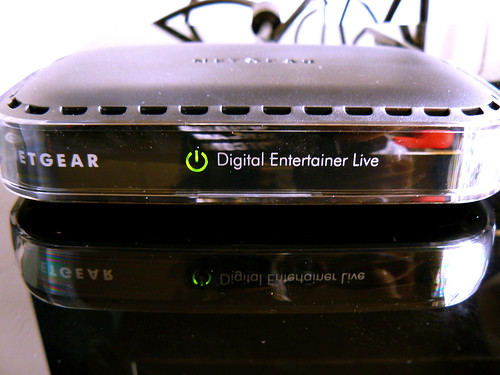The topic that comes up the most when citizen ask me about computers is wireless networking (also known as Wi-Fi - Wireless Fidelity, or Wlan - Wireless Lan). What does 802.11g mean? How do I configure my router? How can I leech off of my neighbor's wireless network? Since I'm running a technology blog, I view I'd report my knowledge on the technically-unsavvy (or the Wlan beginner). These tutorials are not for the super industrialized networking guru, mind you, so don't take it as such! This will be a three-part article, broken down into the following parts:
- What you'll need to setup a wireless network (the part you're reading now).
- What the standards mean.
- How to configure your wireless network once it's been setup.
We'll be practical here. I'm not going to bore you by going into information about the out-dated wireless standards. You don't want to know about old technology that you can't buy anymore. Saying that, I will give you a single paragraph rundown on the origin of the terms Ieee and 802.11, because you'll see them throughout this three-part article.

What do the terms Ieee and 802.11 mean?
The incremental wireless standards are designated by a letter (e.g. B, g, n) after the numbers 802.11. It's called 802.11 because that was the name of the group formed to originate the standard. You'll see the acronym Ieee as well, which means 'Institute of Electrical and Electronics Engineers' - the assosication that ultimately oversaw the 802.11 group and the creation of the wireless standard. The midpoint consumer doesn't need to know anything more than that. Pretty straight-forward, no?
Shopping for your wireless network.
Now, lets talk about what you'll find when you shop for a wireless router. We'll start with what you'll need to setup a wireless network in your home - the basics. First, you'll need a wireless router. There are abundance of makes and models, but commonly they do the same thing. I won't get into which is best, but I'll tell you what I use. My wireless router is made by D-Link, using the 'n' proper (more on standards later). The other major router manufacturers are NetGear, Linksys, Buffalo, Belkin and Trendnet. Like I said though, they all do commonly the same thing. Don't worry too much about the brand.
The next piece of tool you'll need (or won't need) depends entirely on the computers you're going to be connecting to your new Wlan. If you'll be connecting a laptop, chances are you won't need any further hardware for it, unless your laptop is more than 5 years old (in which case I'd advise using it as a door-stop or anti-theft device, instead of a computer). Laptops come with built-in wireless Nics (network interface cards), so chances are you won't need to buy anything additional.
If you have a Pc, you can whether associate it wirelessly, or if it's in close nearnessy to the wireless router, you can use a network cable and plug it directly into the back of the device. If it's not close to the router, you'll need to buy a wireless Nic. The brand doesn't surely need to be the same as the router, though I'd advise it for compatibility sake. What you do have to watch for, however, is that the wireless Nic and the wireless router share the same standard. Most likely this will be 'n' or 'g'. Routers and wireless Nics are commonly backwards-compatible. Meaning, they'll work on both standards (and previous standards as well).
You will need at least one network cable. This will be used to associate your router to anything broadband gadget you're using (cable or Dsl modem). You'll need a second cable if you want to associate your Pc directly to the router. That's all as far as hardware goes. Just two - possibly three - pieces of hardware. It doesn't cost much to setup a Wlan. As I described above, the next report will be focused on the current Wi-Fi standards and what they mean. We'll get a puny more technical there.
Wireless Networking Made Easy - Learn How To Setup a Wireless Network At Home - Part One Of Three